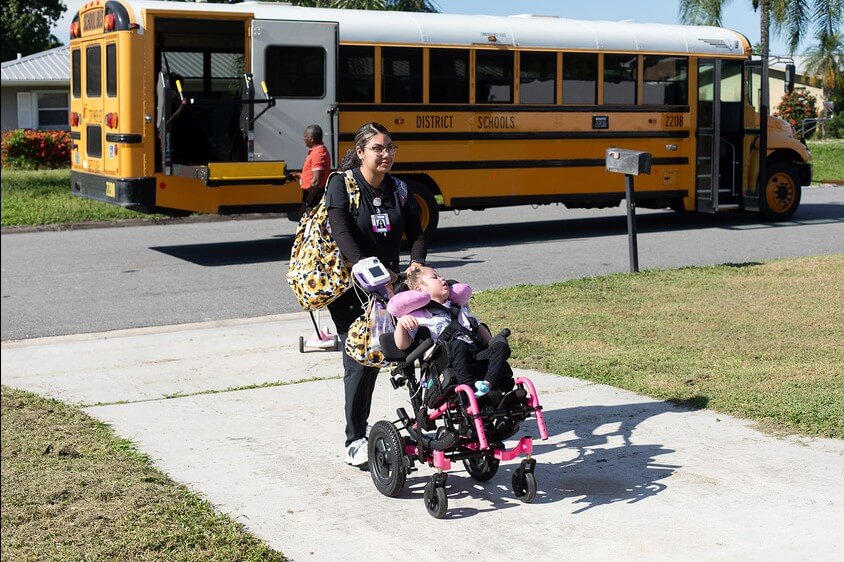
It’s Research Tuesday! And I’ve got oral language skills on the brain. How they develop in first-graders, in particular, and how we can monitor progress in classrooms, know when to provide support, and be a good team player on a school-based RtI team.
Article
Robinson, W. (2012) Curriculum-Based Assessment of Oral Language and Listening Comprehension: A Tool for Intervention and Progress Monitoring in the Common Core State Standards. Seminars in Speech and Language, 33(2), 160-172.
Times, they are a-changing in our schools – and SLPs are looking for new tools to bring value to their school teams! The implementation of Response to Intervention (RtI) framework and the shift to the Common Core State Standards mean much more data being collected all around, along with consistency of standards and expectations. In general, these are good things for school-based SLPs working to prevent, identify, and treat communication disorders in an increasingly diverse student body.
When the schools I work in first started using DIBELS to track reading fluency, the RtI framework seemed clear and straightforward – students who were not progressing as expected were served in smaller groups, with increasingly intense research-based interventions. Reading fluency is very easy to track in correct words per minute, but it turns out the rest of the academic success puzzle can be much harder to measure. Many of my districts use EasyCBM to collect data on reading comprehension and vocabulary, but teams are less clear how to make sense of the data, and more importantly, what kinds of interventions to offer. Though many acknowledge the contributions of SLPs in the progress-monitoring and pre-referral process, we just don’t have a great tool chest for measuring progress in oral language for large groups over time.
So when I came across Curriculum-Based Assessment of Oral Language and Listening Comprehension: A Tool for Intervention and Progress Monitoring in the Common Core State Standards, I was intrigued! Could this be what I have been searching for?
Purpose of the Study
This study was searching for appropriate measures to monitor student progress in the oral narrative skills of first-graders. Specifically which measure – C-units, TWS, or story grammar elements – would most separate first-graders’ oral language skills? And would any of those measures correlate with PPVT scores in measuring growth from the beginning and end of the year?
How did they do this?
104 Iowa first grade students participated in the study – 52 students with identified language disorders and IEP goals for language and 52 average general education 1st graders (i.e. not high- or low-acheiving) from the same classrooms as the students with language disorders. 15 different books meeting criteria for basic narratives were chosen as the probes. Every 2 weeks from October to April a different book was read to the student, and the student was asked to immediately retell the story to the SLP. Books were read without showing the pictures, and retells were always recorded and transcribed to ensure accuracy and reliability. Then, each sample was analyzed using the three measures: the communication unit (C-unit) — an independent clause, along with all its modifiers, measured only during the first 2 minutes of the retell total words spoken (TWS) – measured only during the first 2 minutes of the retell story retelling evaluation guide – a measure of story grammar elements such as setting, plot episodes, resolution, etc. Additionally the number of mazes was in the sample was measured. A maze was defined as a “series of words, fragments, or parts of words that do not constitute a communication unit and are not necessary to the communication unit.”
And so…?
Not surprisingly, general education students had higher scores than the students with language disorders on all four measures. The best measure for separating the two groups was the story retelling evaluation guide.
Both C-units and TWS also differentiated between the groups, though there was more variance from one story task to the next. Measure of mazes did not discriminate between the two groups as much as any of the other measures.
There was a “slight relationship” between TWS measures and PPVT measures at the beginning and end of the year.
The Rest of the Story
One of the most interesting parts of the article was the author’s reflections on selecting stories for first graders to retell. She had the following observations about what made stories overly difficult or inappropriate for the task: too long for first graders to remember and retell (emphasis is more on auditory memory than oral language or comprehension) not well organized with story components not clearly delineated too abstract to follow, especially without looking at the pictures
As I plan for my own increased involvement with data teams and progress monitoring, I realize I still don’t have a perfect tool. Still, I feel more confident in my contributions, and comfortable with my use of story grammar measures as a data point. Though I won’t necessarily have grade-referenced norms, and I will still need to be cognizant of various cultural groups and their specific narrative traditions, I will have several tools at my disposal, and the ability to confidently use material from the classroom curriculum in collaboration with teachers! Check back with me in a year to see how it has gone!





